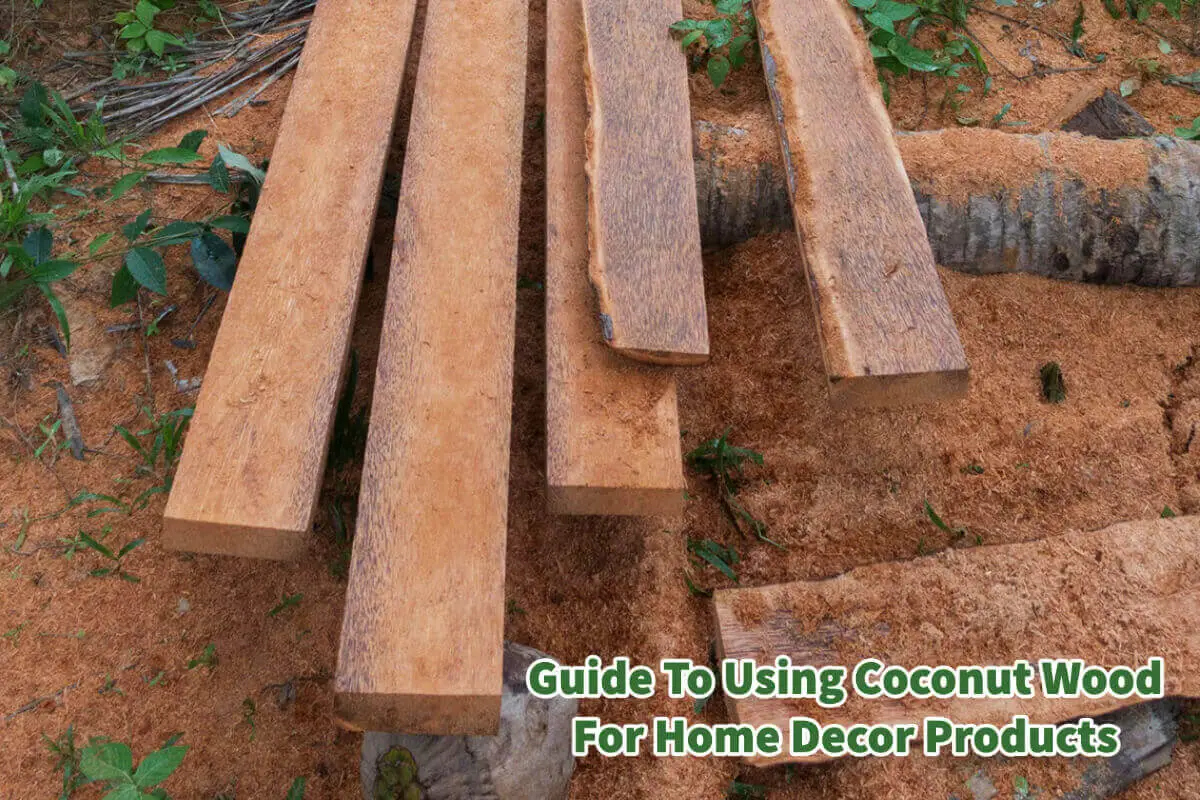Coconut wood is a great option for crafting home decor products. It has a unique look and feels compared to other woods, making it perfect for creating an engaging and stylish atmosphere in any space.
Coconut wood is the wood from the coconut tree. It is usually considered a sustainable wood as the coconut woos is used once the tree can no longer produce more coconut fruit. Using coconut wood does have some natural design limitations that anyone considering using the wood should understand. Read on as we explore those design limitations and more qualities of coconut wood.
Table of Contents
- What Is Coconut Wood?
- Design Limitations Of Using Coconut Wood
- Frequently Asked Questions
- Related Content
What Is Coconut Wood?
Coconut wood is a versatile and eco-friendly material used for centuries in traditional crafts and construction in tropical regions worldwide. The wood is harvested from mature coconut palm trees’ trunks, a common sight in many coastal and tropical areas.
Coconut wood is a type of hardwood that is harvested from the trunk of mature coconut palm trees. While most people associate coconuts with the delicious fruit and refreshing water they provide, the palm tree is also a valuable resource. Every part of the tree can be used for various purposes, from building materials to food and medicine.
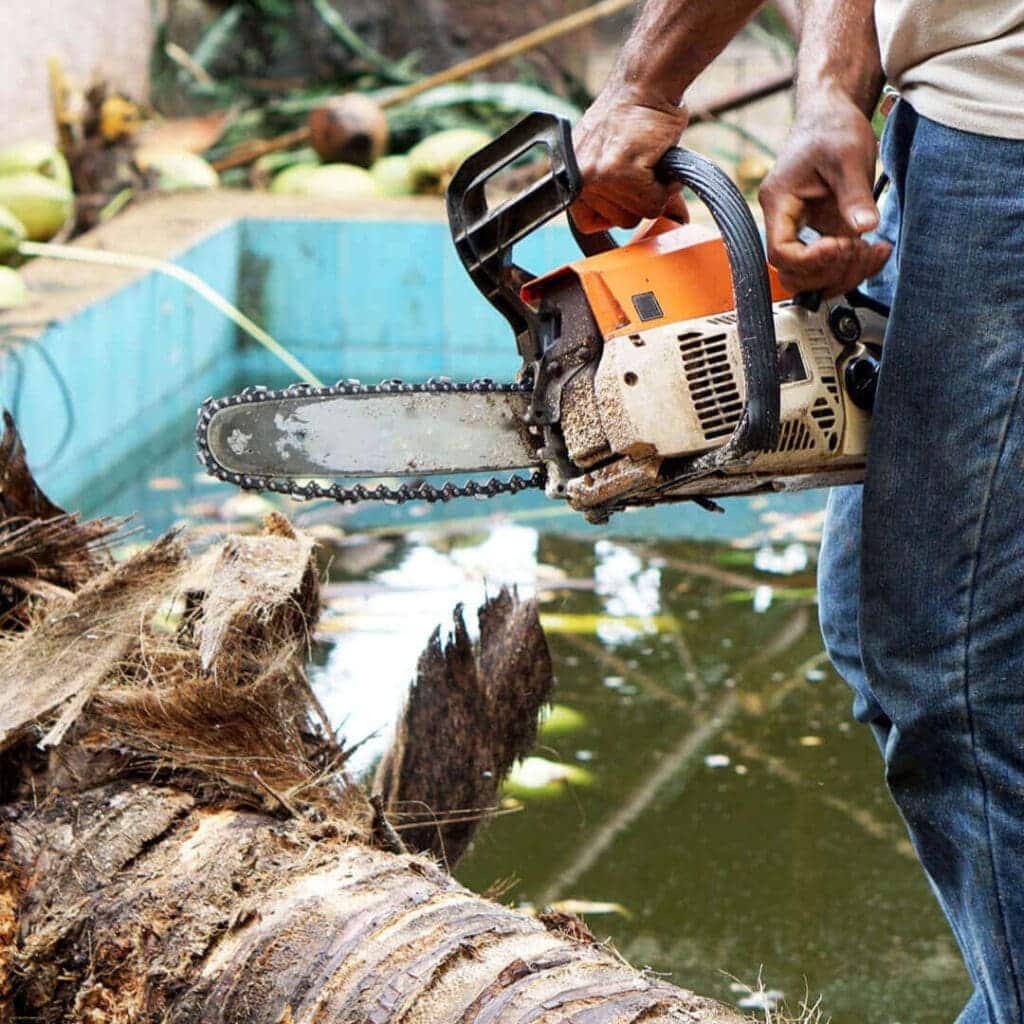
One of the key benefits of using coconut wood is its sustainability. Coconut palm trees proliferate and require relatively little water and resources to thrive, making them an excellent choice for those looking to reduce their environmental impact.
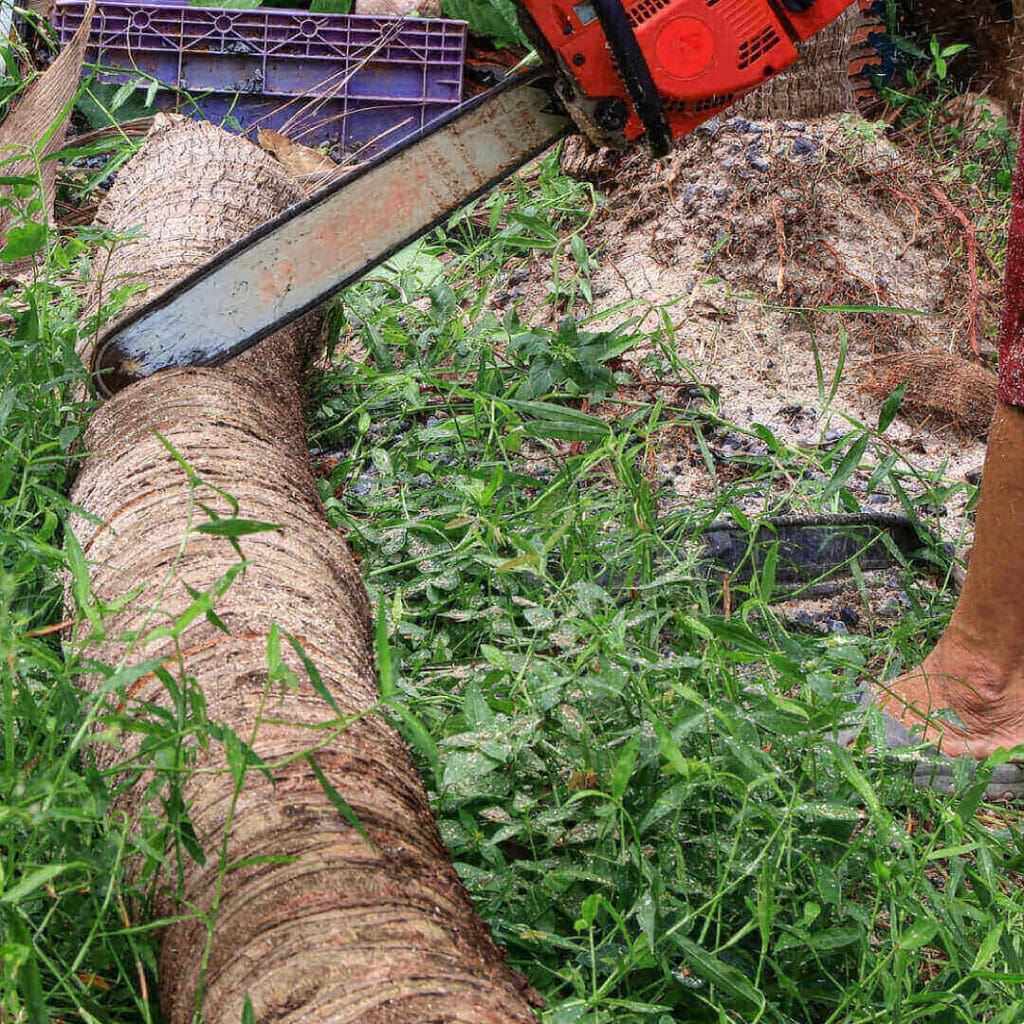
Additionally, coconut wood is often harvested from trees that have reached the end of their natural lifespan, meaning that it is a byproduct of the coconut industry rather than a product of deforestation. So, using coconut wood means that the wood is not just burnt or tossed aside as waste wood.
That is one reason coconut wood is usually considered eco-friendly and sustainable.
Design Limitations Of Using Coconut Wood
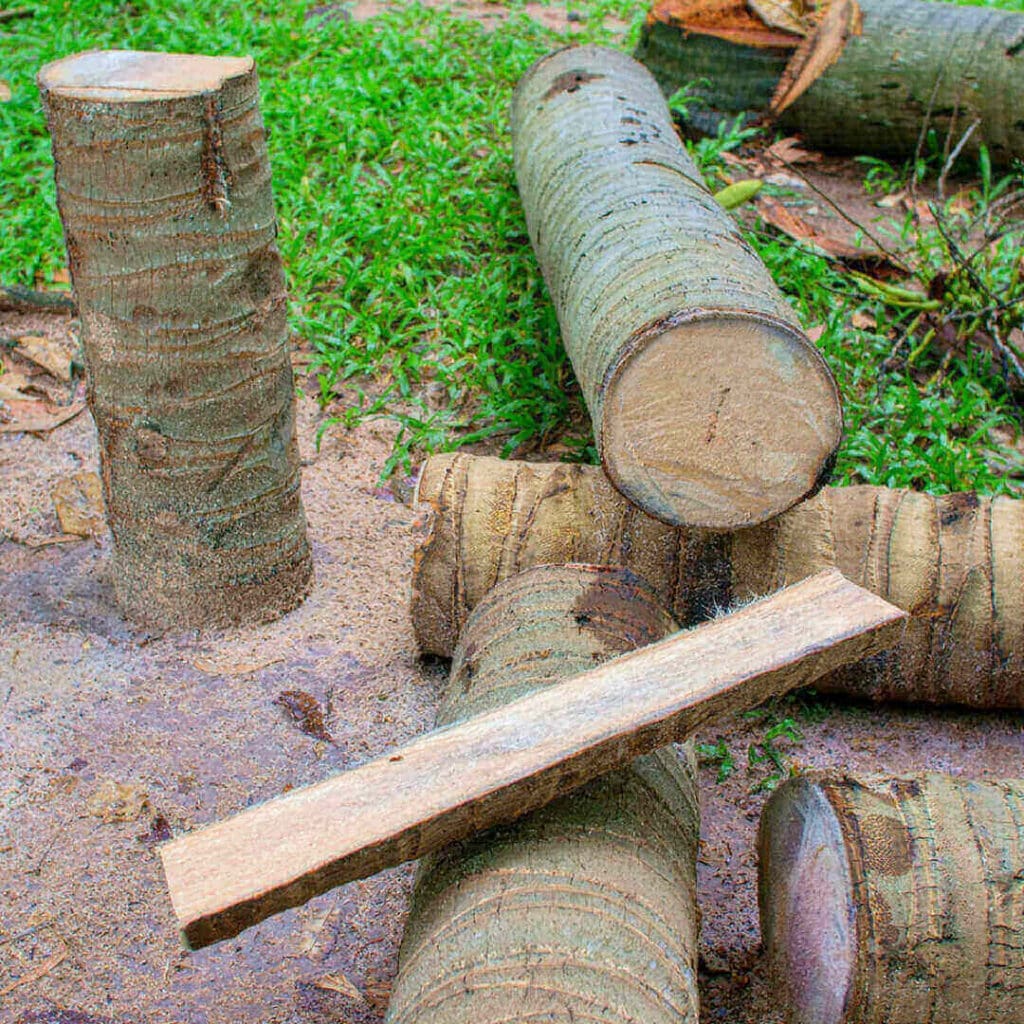
Even though coconut wood is a wood that has been used for centuries, there is some noted design limitation when you are using wood.
Coconut Wood’s Beautiful Natural Color
Most products of coconut wood usually use naturally colored timber and do not add much stain or color to the wood. There are many reasons for this, but one is the natural beauty of wood.
Most manufacturers of coconut wood do not add a stain or color to the wood because coconut wood has a unique natural color and texture that is highly prized for its beauty and durability. The natural color of coconut wood ranges from light beige to deep brown, with natural patterns and markings that add to its appeal and unique look of coconut wood.
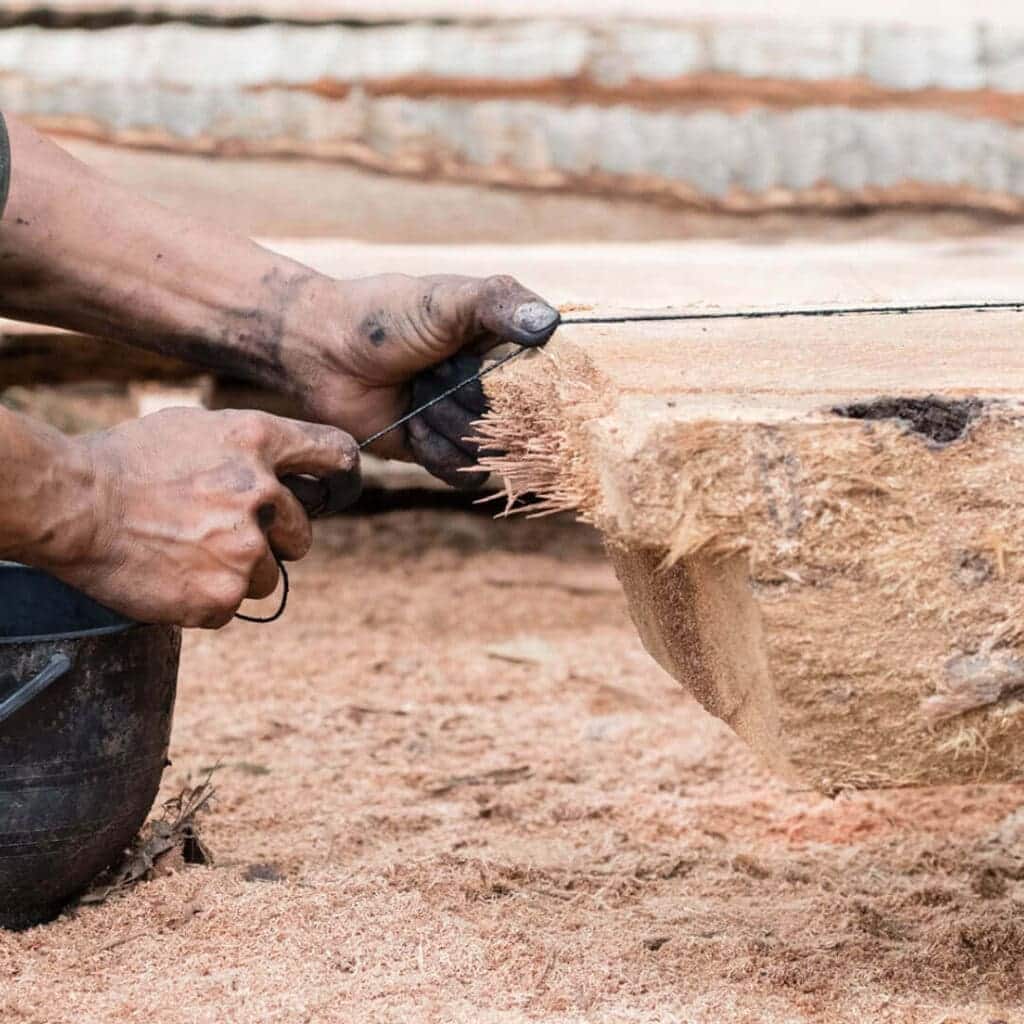
Coconut Wood Is A Hard Dense Wood
Additionally, coconut wood is a hard, dense, and oily wood that is naturally resistant to water, decay, and insects. Adding a stain or color to the wood could compromise its natural properties and durability.
So most manufacturers do not want to add color to the wood as it can compromise its natural properties.
Coconut Wood Is Sustainable Wood
Coconut wood is a sustainable and eco-friendly material harvested from coconut palm trees that are no longer productive. By using the natural color and texture of the wood, manufacturers can create beautiful and functional products while minimizing their environmental impact.
Most Items From Coconut Wood Are Usually Smaller In Size
The size of coconut trees can vary depending on several factors, such as the coconut palm’s variety, the tree’s age, the location where it is growing, and the growing conditions.
On average, coconut trees can grow up to 30 meters (100 feet) tall and have a trunk diameter of up to 45-60 centimeters (18-24 inches) at the base. Even at this size, by the time the bark is taken off and the wood has been processed, the size of the wood to process is relatively small.
That is why most items made from Coconut wood are pretty small. Many of our manufacturers will produce things that are usually no wider than 6 inches and no longer than 10 inches because coconut wood is a small wood.
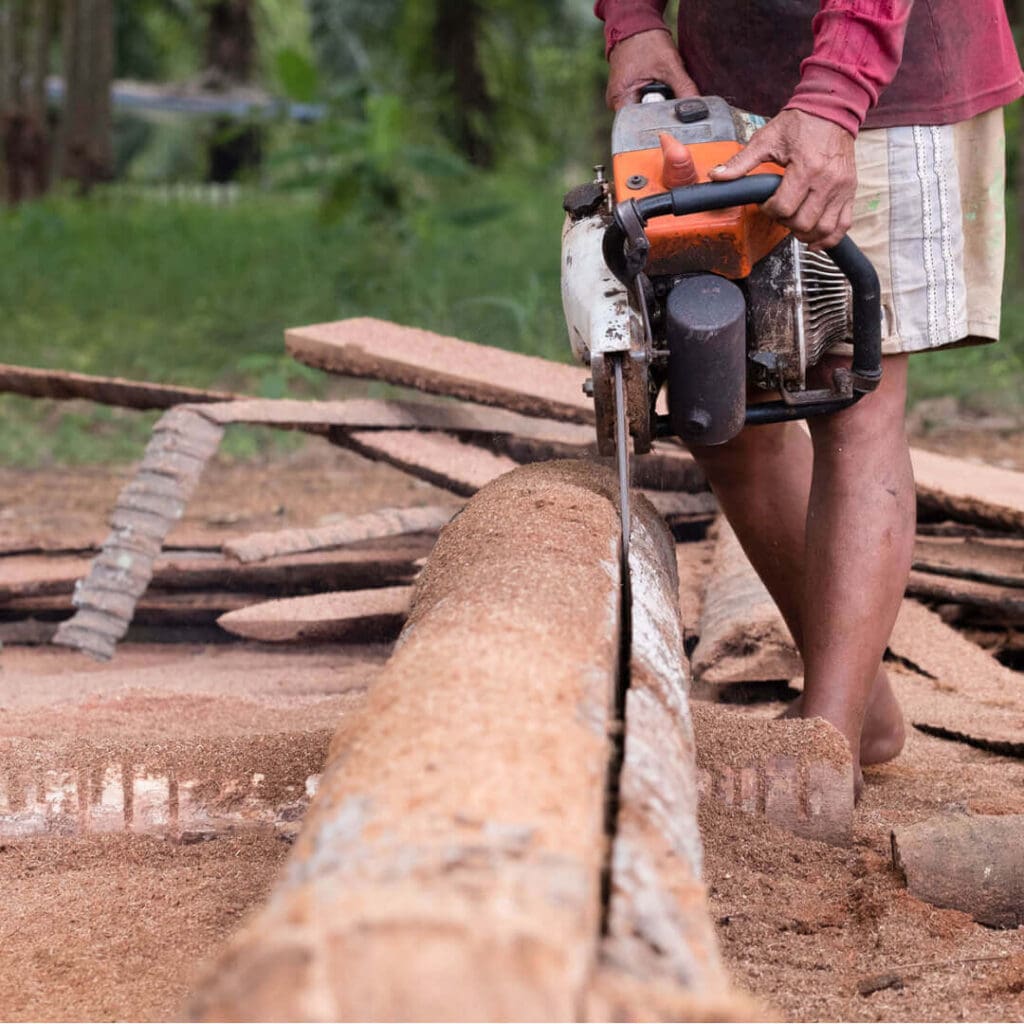
Most Coconut Wood Items Are Not Joined Together
Coconut wood is usually not joined by glue because it contains many natural oils, resins, and silica, making it difficult for the adhesive to adhere properly. These natural compounds in coconut wood can prevent the glue from penetrating the wood fibers and creating a solid bond, resulting in weak or unstable joints.
Instead of glue, coconut wood is often joined using traditional joinery techniques such as mortise and tenon, dowel, or dovetail joints. These techniques rely on the mechanical interlocking of the wood fibers to create strong and durable joints without glue.
Moreover, coconut wood’s high oil and resin content makes it resistant to decay, insects, and water, which means it can be used in outdoor applications without additional protection or coatings.
Despite these limitations, there are many reasons to consider using coconut wood for your home decor products. For one thing, coconut wood is an eco-friendly option, as it is a renewable resource and can be harvested without harming the environment. It is also very durable and resistant to rot and pests, making it ideal for use in items that will be used and handled frequently.
Coconut wood has a unique and attractive texture that can add a rustic, natural feel to your home. It is versatile and can be carved, sanded, or polished for various looks and styles.
Coconut wood is an excellent choice for those looking for a sustainable and unique material to incorporate into their home decor. While it may not be suitable for larger or more complex items, it is perfect for smaller decorative accents that add warmth and character to any room.
If you are interested in seeing how Mondoro can help you with your home furniture or home decor products – we would love to talk to you about how we can help you.
Find out more about how Mondoro can help you create, develop, and manufacture excellent home decor and furniture products – don’t hesitate to contact me, Anita. Check out my email by clicking here or become a part of our community and join our newsletter by clicking here.
Mondoro gives out a FREE Lookbook to anyone interested. You can receive a copy of our latest Lookbook by clicking here.
Listen to our Podcast called Global Trade Gal. You can find it on all major podcast platforms. Try out listening to one of our podcasts by clicking here.
Subscribe to our Mondoro Company Limited YouTube Channel filled with great videos and information by clicking here.
Frequently Asked Questions
What is coconut wood, and why is it a good choice for home decor products?
Coconut wood comes from the coconut tree, and it’s an excellent choice for home decor due to its unique aesthetic appeal. It offers a distinct look and feel compared to other woods, making it an attractive option for crafting stylish and engaging decor items.
Is coconut wood considered sustainable for home decor purposes?
Yes, coconut wood is generally considered a sustainable option. It is harvested from coconut trees that are no longer productive in terms of coconut fruit, providing a second life for the tree.
What are the natural design limitations of coconut wood for home decor products?
Coconut wood has inherent characteristics such as natural color variations, knots, and a coarse grain. Designers and craftsmen need to be mindful of these features when creating decor items to enhance the wood’s unique qualities.
How does coconut wood compare to other types of wood commonly used in home decor?
Coconut wood stands out for its distinct appearance, which includes a warm, rich color and a unique grain pattern. Its sustainability and eco-friendly nature also contribute to its appeal compared to other types of wood.
Can coconut wood be used for both indoor and outdoor home decor products?
While coconut wood can be suitable for indoor decor items, it may not be the best choice for outdoor use. It is recommended to use it in environments where it can be protected from excessive moisture and harsh weather conditions.
Does coconut wood require any special care or maintenance for home decor products?
Coconut wood generally requires regular dusting and occasional polishing to maintain its natural luster. It’s essential to avoid prolonged exposure to direct sunlight and extremes in temperature to prevent any potential damage.
Are there any specific finishing techniques recommended for coconut wood in home decor crafting?
Utilizing natural finishes such as oils or waxes can enhance the beauty of coconut wood while preserving its natural characteristics. These finishes also provide protection against minor scratches and wear.
Can coconut wood be combined with other materials in home decor products?
Yes, coconut wood can be successfully combined with various materials, such as metal, glass, or fabrics, to create unique and aesthetically pleasing home decor items. This allows for versatile and creative design possibilities.
What are the potential challenges when working with coconut wood in home decor crafting?
Craftsmen should be aware of the wood’s density and hardness, which may affect the ease of working with it. Proper tools and techniques should be employed to overcome any challenges and ensure quality craftsmanship.
Where can one find high-quality coconut wood for home decor projects?
High-quality coconut wood for home decor projects can be sourced from reputable suppliers, artisan markets, or specialized craft stores. It’s crucial to verify the wood’s sustainability and quality before making a purchase.
Related Content
Is Teak a Coniferous, Evergreen, or Deciduous Tree? 11 Teak Wood Facts
Teak is a deciduous, not evergreen or coniferous tree. Teak leaves do not fall off in the wintertime, off in the dry season; in Asia, where teak trees are naturally grown, the dry season is not always the same as winter. As the teak leaves do fall off, the tree is considered to be a deciduous tree.
You can learn more by reading our blog, Is Teak a Coniferous, Evergreen, or Deciduous Tree? 11 Teak Wood Facts, by clicking here.
How Do You Know If Your Outdoor Cushion Is A Quality Cushion?
By looking at several things, you will know if it is a quality cushion. The outdoor fabric should be specified for your outdoor furniture cushions. Sewing an outdoor cushion takes technical skills in cutting the cushion pattern and tal sewing. The pillow needs foam, a waterproof cover, and an outdoor fabric cushion.
To find out more and see the inside of a quality outdoor cushion, you can read our blog, A Guide to Sewing Your Outdoor Furniture Fabric Cushions, by clicking here.
What Are The Types Of Wood Used In Furniture?
Wood for furniture is divided up into complex and softwood. Though the woods have some similarities, they also have some differences. Different looks and types of furniture may require a certain kind of wood. Some wood species will be higher priced, and others will be cheaper; price, durability, look, color, finish, and structure can decide what wood to choose for your furniture piece.
You can find out more by reading What Are The Types Of Wood Used In Furniture? by clicking here.

